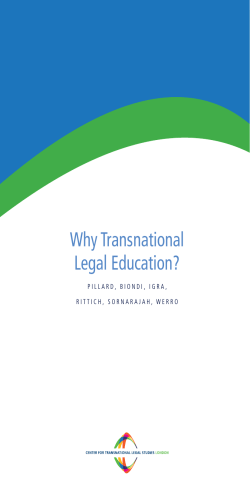
Modernity and Globalisation
MODERNITY AND GLOBALIZATION Anton Popov THE TRANSNATIONAL FAMILY Week 17 GLOBALIZATION AND TRANSNATIONALISM Globalisation often refers to ‘the intensification of global interconnectedness’ and suggests that the world we now live in is ‘full of movement and mixture, contact and linkages, and persistent cultural interaction and exchange’ (Inda and Rosaldo 2002: 2) One of the most visible manifestations of globalisation is transnationalism which is characterised by ‘the high intensity of exchanges, the new modes of transacting, and the multiplication of activities that require crossborder travel and contacts on a sustained basis’ (Portes et al. 1999: 219). GLOBALISATION, MODERNITY AND CULTURE The transnational flow of people, ideas, goods, images and capital challenges the notion of culture as a production and exchange of meanings between members of a localised and territorially bounded community. Thus globalisation is often referred to as a driving force of modernity which is sometimes defined as a form of ‘expansive civilisation’ advancing upon localised, and increasingly marginalised, ‘traditional’ cultures (Hannerz 1996). The opponents of this scenario argue that, the transnational flow of goods, ideas and people goes in both directions and brings the cultural diversity of the ‘periphery’ to the ‘centres’ of Western culture as well. (Clifford 1988: 17). TRANSNATIONAL MIGRANT CIRCUITS A ‘transnational migrant circuit’ as a multi-sited but single community which is constituted by ‘the continuous circulation of people, money, goods, and information’ (Rouse 2002: 162). The transnational migration from less affluent countries to Western cities is an example of what Rouse calls ‘the social space of postmodernism’ where, alongside the capitalist penetration of the periphery goes ‘peripheralization at the core’. In order to understand the process of transnationalism different agencies involved in transnational circuits including such networks of social relations as families and friends have to be brought into the light (Portes et al. 1999). CRITIQUES OF THE HOUSEHOLD APPROACH TO MIGRATION Phizacklea (2004) criticizes the household theories of migration developed during the 1980s (see for example Stark 1984 and 1999), by arguing that these theories simply shifted the family into a position of effective decision-making unite ignoring the individual. Such accounts of the transnational family do not recognize the household’s implication in gendered ideologies and practices. They are also usually not applied to Western societies but cast that members of Third World households as ‘traditional’ meaning that they are ‘not burdened by the individualism of the West’ and ‘resolve to cooperate willingly and completely … to collectively lift the burden of their poverty’ (Gross and Linquist 1995: 328, cf, Phizacklea 2004: 125). Empirical data provide evidence of complex decisionmaking process within households: migration, for example, can be seen by women as an escape from repressive forces of patriarchal society. TRANSNATIONAL FAMILIES: SOCIAL AGENCY IN FOCUS Family constitutes a support network for transnational migrants; for example, it often operates as a channel for migrants’ cross-border movement. Family networking connects home communities with their ‘diasporas’, making them effectively ‘a single community spread across a variety of sites’ (Rouse 2002: 162). Theories of transnational migration and emerged to significant extent as a critique of what Roberts et al. (1999: 253) call ‘overtly structural approach’, which suggests that migrants are mainly passive subjects ‘coerced by states and marginalized by markets’ (cf. Phizacklea 2004: 129). Thus focus on transnational social networks, and families in particular, stress decision-making capabilities of individual migrants. This, according to Phizacklea, ‘restores an analytically coherent view of the relationships between structure and agency’ (2004: 129). STEAMSHIP ROUTES, 1900 http://qed.princeton.edu/main/MG/Maps TRANSNATIONAL LIFE: PAST AND PRESENT Robert C. Smith: ‘Transnational life and reciprocal effects of assimilation and migration are not new… but they require a new theoretical lens to them as such’ (2006: 8-9) The main aspects in which the present transnationalism is different from its earlier forms: • • • • Communication and travel technologies Different regimes of assimilations (e.g. in the USA Americanisation in the past but encouragement of ethnic identification and links with the home country now) National identities rather then local/village identities of migrants International system exerts contradictory pressures on migration: the ‘remote control’ of the migration through passports and other state controls, and promotion of economic and cultural globalisation RELATIVISATION: IMAGINING THE TRANSNATIONAL FAMILY Bryceson and Vuorela define ‘transnational families’ as ‘families that live some or most of the time separated from each other, yet hold together and create something that can be seen as a feeling of collective welfare and unity, namely ‘familyhood’, even across national borders’ (2002: 3). Individuals establish, maintain or curtail relational ties with other members of transnational families through the relativisation process. Transnational family relations ‘are created by active pursuit or passive negligence of family blood ties and the possible inclusion of non-blood ties as family members... Relativisation refers to modes of materializing the family as an imagined community with shared feelings and mutual obligations’ (Bryceson and Vourela 2002: 14). THE TRANSNATIONAL FAMILY AS AN IMAGINED COMMUNITY There are several similarities between ways how belonging to family, nation and ethnic group is perceived by people. In all three cases belonging is imagined rather than ‘natural’. A metaphor of family is often used towards the nation with ‘naturalising’ connotation. ‘One may be born into a family and a nation, but the sense of membership can be a matter of choice and negotiation’ (Bryceson and Vuorela 2002: 10). The nation-state has an effect on how migrants’ families are defined. Thus citizenship, visa and immigration regulation intertwine with family relations in the process of relativisation. THE TRANSNATIONAL FAMILY AND THE NATION-STATE Perhaps it is too early to speak about the world of globalisation and transnationalism as a ‘post-national’ world (Appadurai 1996: 21). Rather, as Sørensen (1998: 262) argues, transnational migration has not eroded the nation-state but the transnational space becomes a contested space which contains several national and bi-national identities. Transnational migrants do not lose the sense of belonging to territorialised nations, because they, perhaps more than anyone else, are aware of the nation-state’s desire to control its territory as well as the movement of people across its borders. It is possible to say that, to a certain degree, the space of the nation-state has expanded as transnational practices and identities continue to be shaped by the state policies and identity politics of both ‘home’ and ‘host’ nations. THE CASE STUDY: PONTIC GREEK TRANSNATIONAL FAMILIES The construction of the Greek national and ethnic identity of the migrants is coupled with the (re)creation of their family network in time and space. This gives new meaning to the migrants’ Greek-ness as belonging to the family rather than to some ‘imagined’ Greek nation. It also assumes that the family itself is rethought, for it now includes relatives who are remote historically and geographically. The goal of migration to Greece could be economic, but the way to it lies through rethinking Greek identity and creating new meaning for the family and the homeland. They leave for Greece under the pressure of economic difficulties, but arrive there to meet their families, both imagined and actual. CONCLUSIONS Transnational families are in a way an embodiment of the globalizing processes; they make visible the way in which the world system’s discourses penetrate the local reality, making it a part of the world system itself. Although transnational communities exist in, and as, a transnational circuit, they rarely identify themselves as transnationals and continue to speak about their attachment to particular nations, ethnicities, places and countries. As imagined communities transnational families are both the sites of reproduction of, and shifts in, gender, ethnic, national and class identities of their members. QUESTIONS Why is ‘relativisation’ important for (re)production and functioning transnational families? Give examples of relativisation practices from ethnographic studies you have read (from the further reading list). Does the emergence of the transnational family challenge ideas of the ‘traditional’? Discuss using examples of gender relations, citizenship and national/ethnic identity. Why can the transnational family be seen as an imagined community?
© Copyright 2025
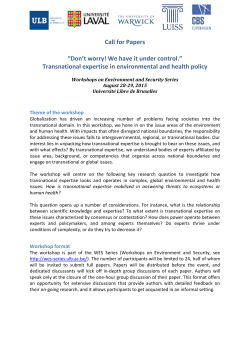
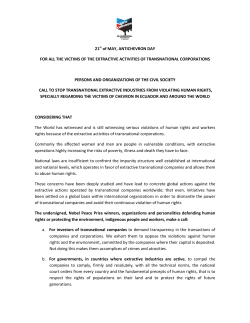
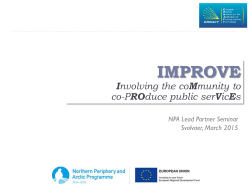


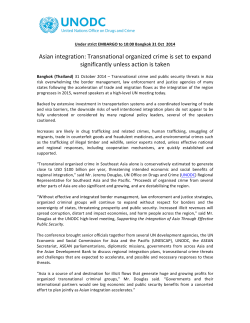
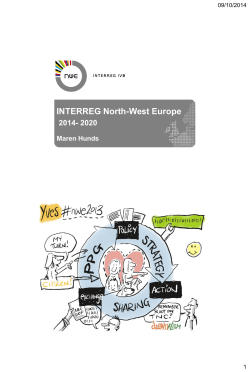
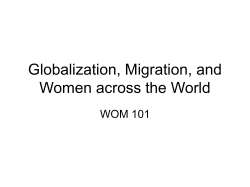



![Chapter 3 Homework Review Questions Lesson 3.1 [pp. 78 85]](http://cdn1.abcdocz.com/store/data/000248451_1-668327adcad67c478c93f46227ffd100-250x500.png)



